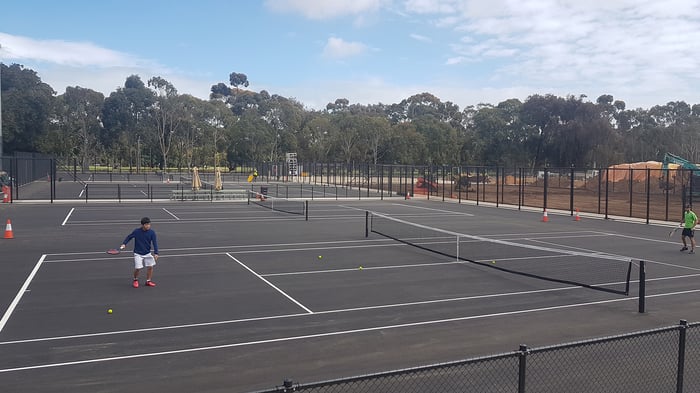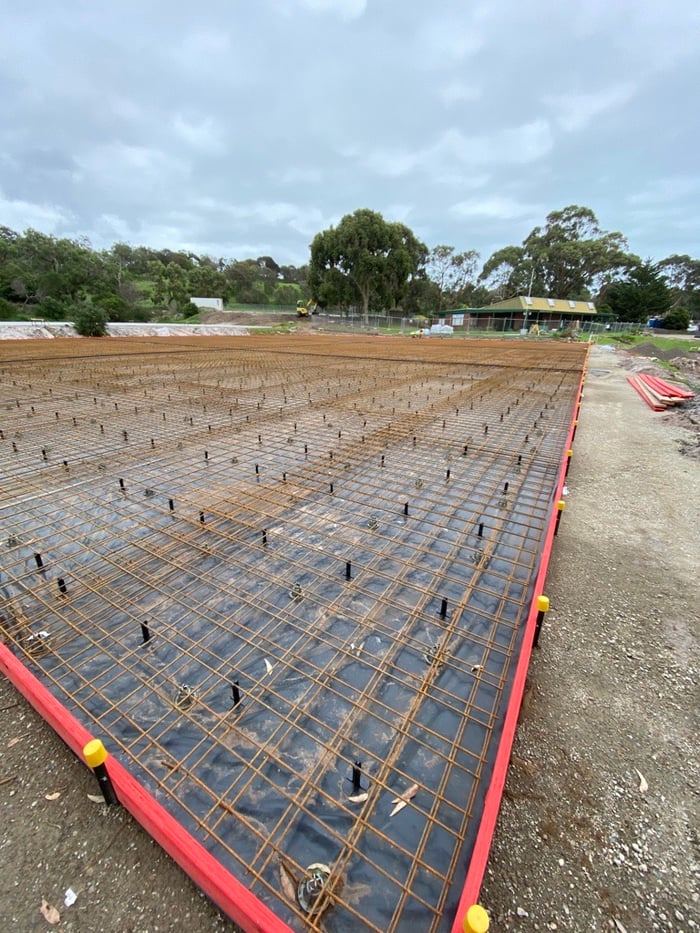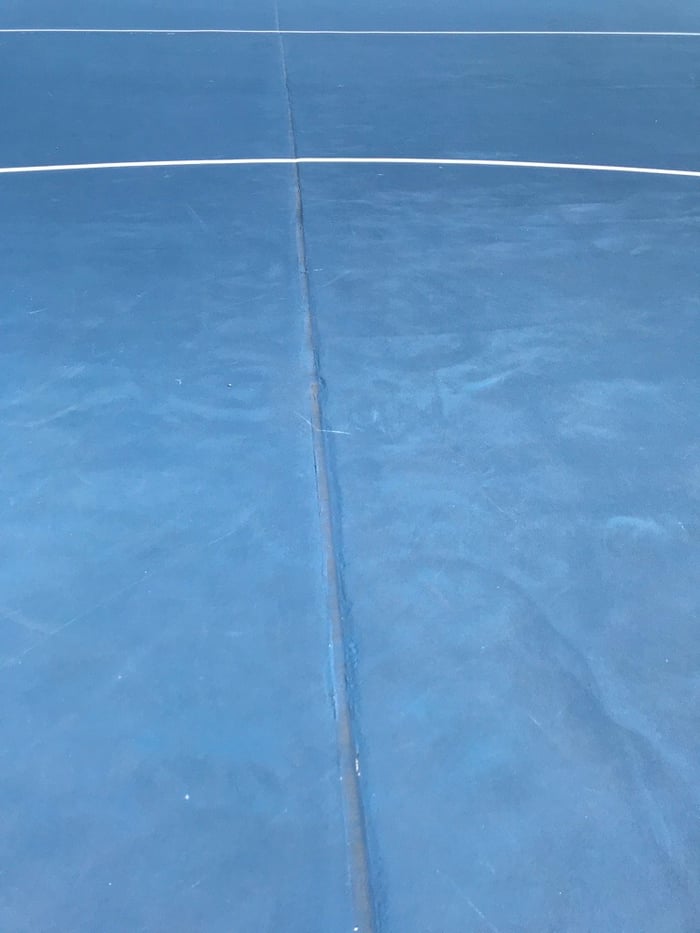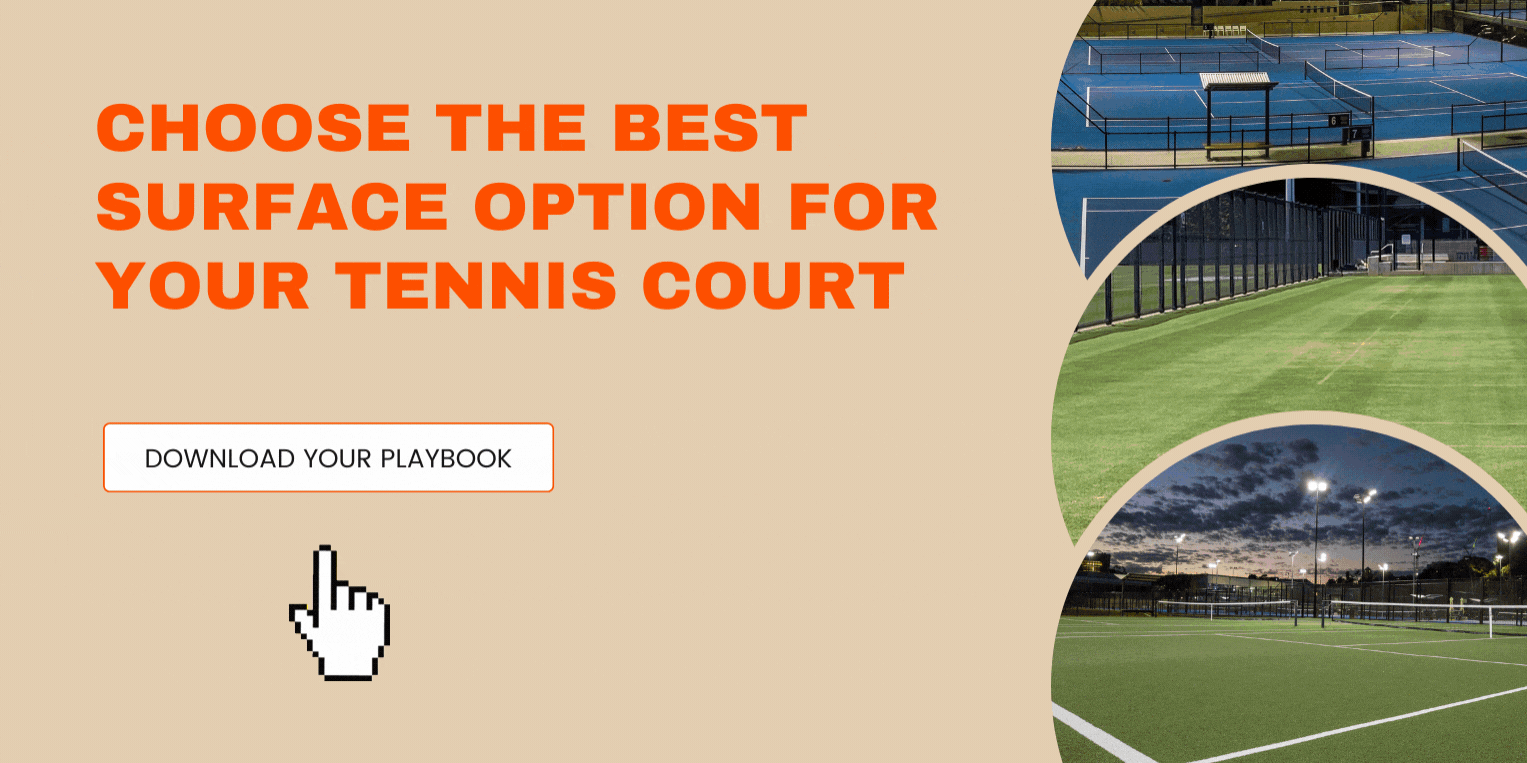The performance and longevity of an acrylic surface is often dictated by the strength of the bond between the acrylic system and the underlying pavement as well as the ability for the pavement to maintain the surface tolerances and integrity for the intended design life (ideally not less than 20-years). Therefore, it is critical that the right pavement is selected for your proposed hard court.
Before considering which pavement is best suited for your acrylic hard court, it is important to understand that pavements alone do not address subgrade issues that your site might have. Undesirable subgrades (i.e. reactive clay, non-engineered fill, etc.) need to be addressed through appropriate subgrade remediation activities (i.e. stabilisation, over excavate undesirable material and replace with engineered fill, etc.). Once you have adequately addressed any subgrade conditions, you can then consider your pavement solution noting that the remediation will likely aid the subsequent overlying pavement design.
There are two pavement types to consider for you acrylic hard court, either rigid or flexible. A rigid pavement is either a conventional reinforced concrete slab or post-tensioned slab, while a flexible pavement also has two options; a dense graded asphalt surface paved onto a crushed rock base or an open graded asphalt over a free-draining pavement. Each have advantages and disadvantages that need to be considered.
 Flexible pavement at the Memorial Drive Tennis Club, South Australia
Flexible pavement at the Memorial Drive Tennis Club, South Australia
A conventional reinforced concrete slab is the least desired for acrylic courts construction, not only is the pavement ‘hard’ underfoot for the players, it also consists of concrete movement joints. These joints are required to control the movement in the concrete due to thermal expansion and contraction. Additionally, the costs can be quite prohibitive while the use of traditional cement and steel reinforcement means it has high embodied carbon when compared against a flexible pavement.
 Pre-pour preparation for conventional reinforced concrete pavement
Pre-pour preparation for conventional reinforced concrete pavement

Expansion joint in conventional reinforced concrete pavement
A post-tensioned (PT) slab has many the same draw-backs as the conventional slab, including higher costs, however the completed slab is joint free. The post-tensioning of the slab prevents the slab from any thermal movement and as such removes one of the main disadvantages of a conventional concrete slab. Depending where in the world your courts are, there may be limited skilled contractors who understand how to build a PT slab. One bonus of the PT slab is that is the only pavement solution that can readily bridge over undesirable subgrade conditions (within reason).
Our strong recommendation is that a flexible pavement be considered for your hardcourt pavement. Not only is it ‘softer’ underfoot and joint free, the embodied carbon is significantly less than the rigid pavement options making it a more environmentally friendly option. The only real set-back with the use of asphalt as the layer which the acrylic is applied to, is that the asphalt can be impure and contain pyrites. Due to the impervious natural of acrylic paints moisture can cause the pyrites to create rust stains on the surface. While there are stain blockers on the market, these products don’t guarantee 100% protection from rust occurring.
So, when selecting which pavement is best suited for your project firstly remember to ensure the subgrade is suitable for the intended construction. Subsequently if a reliable asphalt plant can produce a pyrite-free product, our recommendation is that a flexible pavement be considered for your court for enhanced playability and longevity.
And if you're hesitating between different surface options for your tennis court, we have put together a helpful Playbook that will deliver all the useful key data you need to make the right choce. Just click on the banner below to download!

Return to the main blog page..

